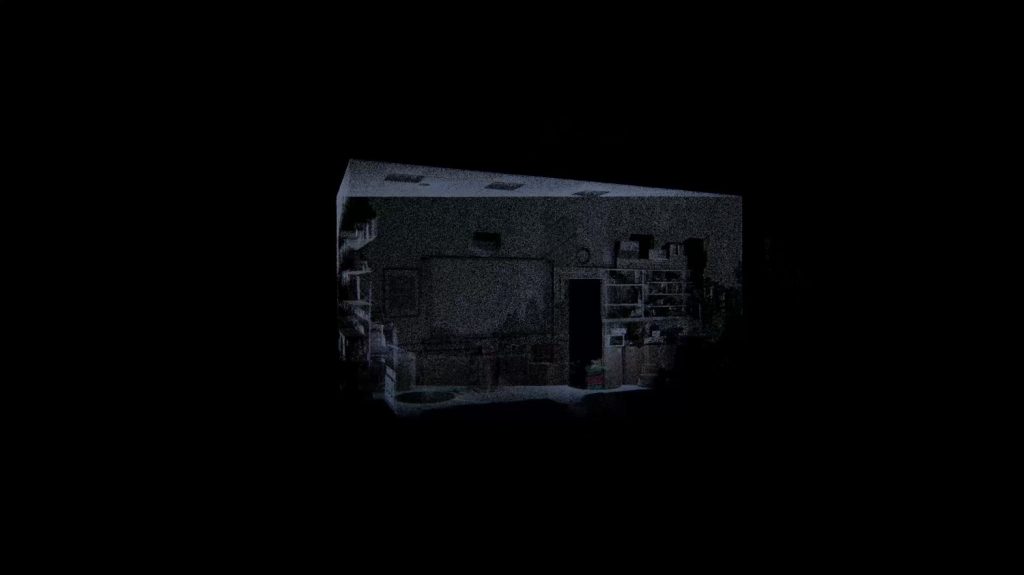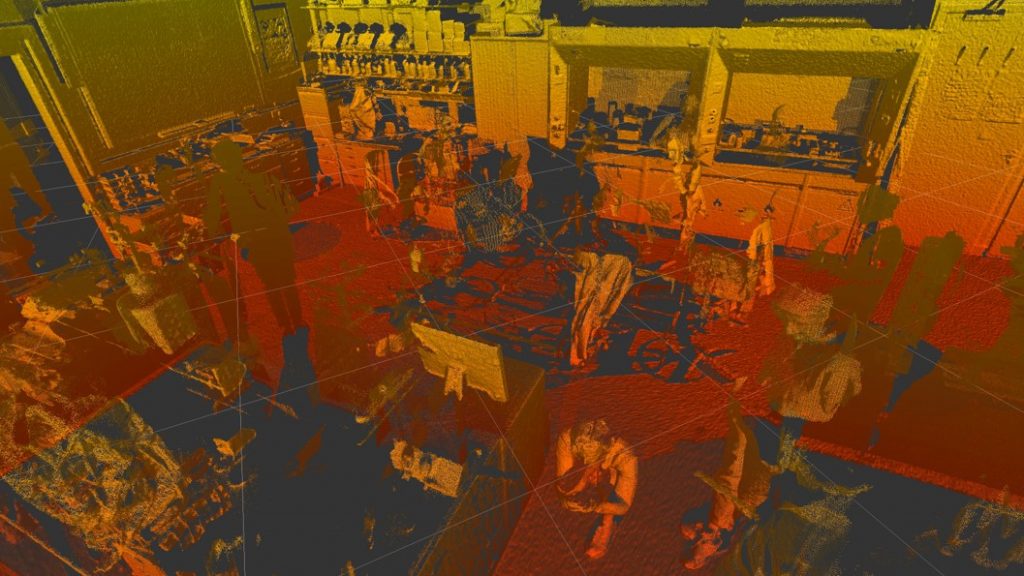THE PROJECT
We began as part of the body is a multi-component digital artwork by Beverley Hood (University of Edinburgh) inspired by the eczema genetic research laboratory of Professor Sara Brown, (University of Dundee) where Beverley undertook an artist residency in 2017, organised by ASCUS Art & Science.
The residency involved spending time observing the activities of the lab and the organotypic i.e. artificially grown skin cell cultures, which are both real and synthetic. Taken from an actual person (via tummy tucks, breast surgery, etc), the cells are processed and maintained outside of the body. Almost indescribably similar and different from the cells that exist within our actual body, genes are changed and tweaked, to create eczema skin.
The artwork combines microscopy, digital LIDAR (Light Detection and Ranging used as a method for measuring distances) and electromagnetic scanning and speech synthesis.
For the Being Human festival exhibition, Inspace is exhibiting an augmented reality app and filmic experience that leads the audience through the skin cells’ journey, during their short, precious, three weeks long ‘in-vitro’ life, from operating theatre to lab, and finally to disposal.
The AR piece is available as a free downloadable app for iOS, enabling audiences to experience the digitally captured lab and spoken word story of the cells, on their own devices in any location.
The film is a single screen, moving image version of the piece, comprised of rendered video footage, exported from the Unity Game Engine.
A seven screen projected version of the film was installed at Inspace for the duration of the exhibition. This was available to view at Potterrow from 12th -30th November 2020.
Beverley was based in the lab for 1-2 days a week between January and June 2017. Initially this time was spent observing the day to day activities of the lab in Ninewells Hospital, Dundee, from the careful nurture of skin cultures, to the precise, complex and delicate processes used to analyse these samples. It also included taking part in weekly staff meetings and seminars on work in the lab, presenting her previous work, as well as general discussions with staff on both a practical and philosophical level. She was particularly interested in the skin samples themselves, the organotypic, artificial skin cultures.
What fascinated Beverley about these cells, is that they are real but synthetic, taken from an actual person (in theatre – tummy tucks, breast surgery etc), but then processed and maintained outside of the body. Their genes are changed, and tweaked to create eczema skin, almost indescribably similar and different from the cells that exist within our own bodies. Under the microscope, the cell samples look almost identical, except the organotypic skin has no nerve fibres, hair follicles, bloody vessels or greasy sebum fluid. So what does that difference mean? How does it affect how we understand our own bodies, not just in medical and scientific terms but in terms of what it means to be human?

The result is an artwork, which attempts to immerse the viewer in the poetic, human and ethical issues that the activities of lab raise. We began as part of the body is a distributed artwork, comprised of multiple components including; mixed reality, augmented reality, installation, sound, 3D prints and film.

The work evolved in iterative stages, drawing together scientific and digitally captured data. Cultivated keratinocyte skin cells (the epidermis), were scanned at the Tissue Imaging Facility, in the School of Life Science, at the University of Dundee, using the confocal microscopy, and recombined as 3D digital models. Blown-up in size, into objects 2000 times larger than life, that fit into the palm of the hand.
The project is guided by a spoken-word narration, telling the story of the organotypic (artificial) skin’s short ‘in-vitro’ life, from the point of view of the cells. The script was written in response to a series of interviews with staff from the Lab.
The dialogue is a 100% scientifically accurate, detailed description of the skin cells journey from theatre, to the lab, to disposal. The information is made curious and poignant, because of the point of view i.e. being voiced by the cells, and the anthropomorphic behaviours the cells ascribed themselves, such as being ‘happy’.
LIDAR and Electro-magnetic scanning were used to digitally capture the lab spatially, as visual, architectural and audio data. These elements were combined in the Unity game engine to create an immersive experience that blends realities, overlapping a digitally captured version of the lab with the viewer’s real world installation experience, inhabited by magnified, scientifically accurate, artificial skin cells.
Middle row shows a preview of the app and LIDAR scans of the labs.
All images by Beverley Hood.
CONTEXT
Further information about the development of the project, as part of the Atopic Residencies, can be found on the ASCUS Art & Science website: www.ascus.org.uk/atopic-art-expressions-of-eczema
www.ascus.org.uk/atopic-art-micro-residency
Read further information about the artist: www.eca.ed.ac.uk/profile/beverley-hood
www.bhood.co.uk
THANKS
Ascus Art & Science, Paul Appleton, Hemal Bodasing, Mike Boyd, Professor Sara Brown, Martina Elias, James Howie, Zoe Irvine, Asad Khan, Liminal Studios, Tayside tissue bank, Tissue imaging facility (University of Dundee), Ucreate Lab, Miriam Walsh, Sheila Wright, Ray Interactive.
The artwork was funded by the Arts & Ethics Research Group, Wellcome Trust, Creative Scotland, Edinburgh College of Art and the University of Edinburgh.
Further information about the work of Professor Sara Brown at the eczema genetic research laboratory here:
www.brownlab.co.uk
EVENT
Design Informatics Lecture Series
View details of the free event that took place Thursday, 19 November 2020 on Eventbrite.
This event was a live discussion about how bodies are imagined, visualised and made audible using bio-medical data. This event will feature artist Beverley Hood in conversation with scientist Professor Sara Brown as they explore how the ‘We began as part of the body‘ artwork evolved in the lab and beyond, using microscopy, 3D modelling, speech synthesis, and immersive technologies.
These events are part the series Visualising Bodies organised by the Centre for Biomedicine, Self and Society at the University of Edinburgh, as part of the Being Human Festival.








